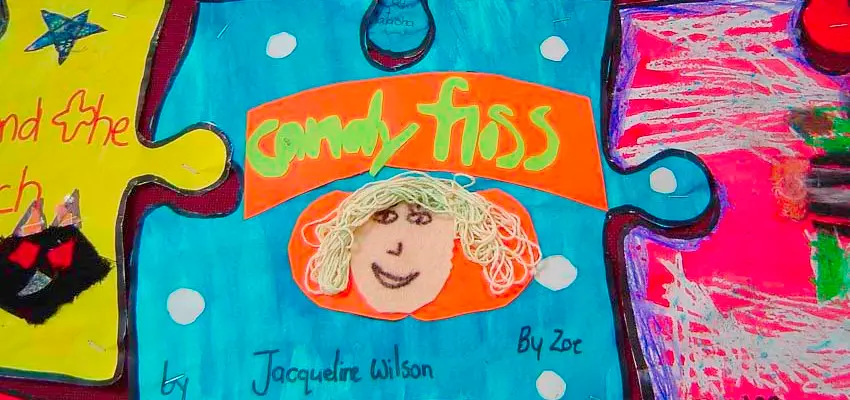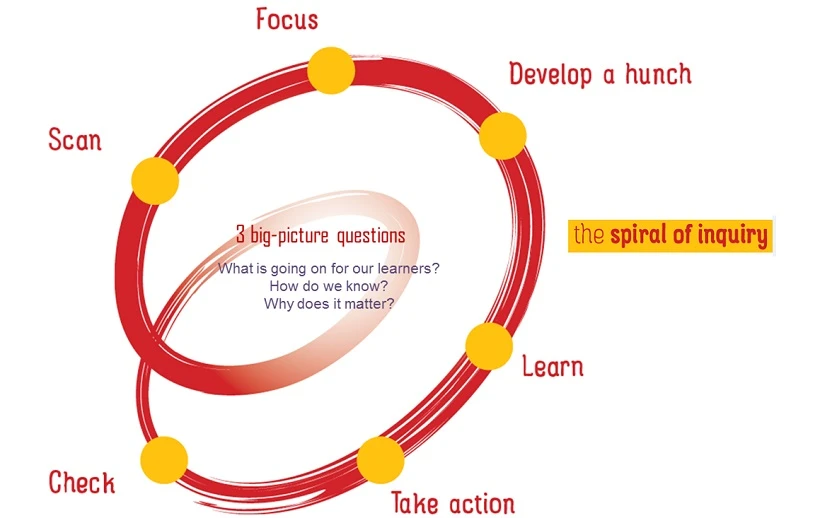Strengthening reading aloud practice to build a school’s reading culture

All rights reserved
Oturu School worked with Services to Schools on a capability-building project to investigate and develop teacher reading aloud practice. They discovered some gaps in practice and opportunities for collegial support and professional development.
Oturu School and National Library capability building
Oturu School is a year 1 to 8 school with about 150 students, 95% of whom are Māori. The school is situated on the outskirts of Kaitaia in the Far North.
The school library was closed because the school was being rebuilt. A small 'pop-up library' had been set up by the student Community Problem Solving team in the resource room.
Oturu School was one of 15 schools that worked with National Library's Services to Schools in 2016 on targeted capability building projects. Oturu School collaborated with local National Library Facilitator, Jeannie Skinner, on a project that used the spiral of inquiry approach to build teacher capability.
Planning successful user-centred change
This story explains the steps the project went through using the spiral of inquiry approach.
It started with a conversation
Unpacking a box of National Library reading engagement books, Heather Greaves (Deputy Principal, Teacher with Library Responsibility and National Library school loan coordinator) passed a book to a year 5/6 teacher and remarked, 'This looks like it might be a good read-aloud'.
The teacher said, ruefully, that she didn’t read aloud much to her students and they discussed some of the reasons. This conversation supported Heather’s hunch that reading-aloud practice was a bit patchy throughout the school. Oturu School also had a focus on developing students’ oral language and vocabulary so 'reading aloud' was a good fit to investigate and strengthen capability.
Term 2: Scanning, focusing, developing a hunch
Heather and Jeannie held some planning meetings then consulted with Principal, Fraser Smith. The project then started with 2 staff meetings in weeks 8 and 10 of term 2 2016.
First staff meeting — brainstorm session
At the first staff meeting, Heather led a brainstorm/learning-map session with the staff about their current practice and ideas about reading aloud. This was a frank, friendly, and open discussion, using starter questions for sharing observations and anecdotes:
Why read aloud? What do you enjoy about reading aloud?
How much time do you spend reading aloud each day, each week?
Who do you read to? What age students do you prefer to read aloud to?
What books have been successful read-alouds for your class/family?
Where do you get your books from?
How do you find out what others are using for read-alouds?
What are the barriers to stop you reading aloud?
Do your students get read to at home?
Issues teachers raised were mainly around:
perceived lack of time — the day gets so busy and reading aloud drops off the programme and despite good intentions, it's not always prioritised
unsettled or disruptive students, and the perception that students wouldn’t like to be read to or have the necessary attention span and listening stamina
uncertainty about what to read aloud, how to choose good read-alouds
lack of confidence in their own reading-aloud skills — 'I don’t think I am very good at it'. Strengthening reading aloud practice to build a school’s reading culture
Second meeting — results, research, and holiday reading
At the second staff meeting, Jeannie reported the results from the previous meeting. She shared research about reading aloud and its benefits. She also suggested practical strategies and approaches, especially for addressing barriers/blocks such as:
time
confidence
choice of material
student listening stamina and behaviour.
Jeannie also 'book-talked' some great chapter books and novels as possible read-alouds for years 1 to 8.
At this end-of-term meeting, each staff member selected at least 3 or 4 titles to read themselves over the school holidays. The aims of this reading were to find potential read-aloud novels for their class the following term. Previous practice had been to read mainly picture books or single sitting read-alouds rather than novels as serials. Another important element of the teachers' own holiday reading was to enjoy getting to know children's fiction themselves. Expectations were set about reading aloud, and the value and rewards of reading aloud were also emphasised.
Term 3: Learning, taking action, checking
At the first staff meeting of term 3, staff shared their holiday reading with each other and also talked about these books with their class. They found this book discussion to be useful, stimulating, and enjoyable. There were more opportunities for staff browsing and book sharing when the term 2/3 National Library reading engagement loan arrived with books suitable for reading aloud.
Teachers taking action
Teachers made a commitment to reading aloud each day, sometimes more than once. They also decided to experiment with reading aloud a serial novel over the term, along with the usual picture book read-alouds.
Some teachers used a '5+ a day' sticker chart where students added stickers for each teacher daily read-aloud session as a way of keeping track. Signs on classroom doors showing their current read-aloud title made reading aloud more visible in the school.
The principal visited classes to read aloud, and reading aloud was included at each assembly.
At staff and syndicate meetings, teachers shared how it was going, strategies for success, and problem-solving (e.g. how to establish listening stamina and reflective listening behaviour).
Teachers made links between vocabulary from read-aloud books and students’ own writing. Classrooms created 'word walls', with rich language from the read-aloud book on removable cards that could be taken to a student’s desk to incorporate into their writing.
School and community connections
Information about reading aloud at home was included in each fortnightly school newsletter during the term and on the school’s Facebook page.
Students were taken to the public library, and library membership was promoted to parents.
Survey of teachers
Towards the end of the 9-week term, teachers completed an online survey about their reading aloud practice and discoveries over the term. The survey results showed the teachers were very positive about their reading aloud experiences. Heather also noted the following:
Teachers got a lot more out of it than they thought they would. They enjoyed it a lot more than they anticipated and it had more impact than they expected. They found reading aloud made a difference to excitement about reading and book discussion. They were quite shocked and surprised by how much the kids wanted to be read to!
Junior school teachers had never actually thought about reading chapter books as a serial. Now they have done it, they found that students’ listening stamina increased.
Something that was identified as a barrier initially — students’ behaviour and lack of listening stamina — doesn’t come up at all now. Students’ listening skills and stamina are developing, and the regular reading aloud has just become part of the classroom day.
A natural progression from the reading aloud focus would be to further develop:
teachers as readers
teacher knowledge of children’s literature, and
the school’s reading culture.
Critical success factors
The 5 main factors for success were:
support, commitment, and good collaboration
great resources to draw upon
spiral of inquiry planning framework and project time frame
teachers sharing their experiences and using series for reading aloud
the project was enjoyable.
Support, commitment, and good collaboration
The principal supported the project and the school was committed to it.
Heather’s management role, curriculum, and pedagogical knowledge were vital.
The school and National Library facilitators had a positive working relationship and worked well together. Both facilitators believed strongly in the power and benefits of reading aloud and cared deeply that all children should have this experience.
Great resources to draw upon
The project used a great blend of face-to-face contact, physical resources, and online support including:
Jeannie’s book knowledge and enthusiasm
quality books from the National Library's schools lending collection
Reading aloud web page that provided online information and support.
Spiral of inquiry planning framework and project time frame
The spiral of inquiry planning framework, and the duration and timing of the project worked well. The project ran over a term and a half, and included some holiday time for teachers’ own reading.
The short time frame helped with momentum and focus. However, a longer time frame would be needed to see more impact on vocabulary for speaking and writing.
Teachers sharing their experiences and using series for reading aloud
Teacher comfort levels and confidence in talking about books were increased by:
sharing about books and reading aloud — which ones have worked and not worked, how long to read
seeing enthusiastic student response.
Using series books as read-alouds worked well too. For example, one teacher started on the 'Treehouse' series by Andy Griffiths. This provided a 'reading plan' for what to read next, and confidence and buy-in from the students.
The project was enjoyable
It was really about the pleasure of reading, engagement with books and story, and strengthening the reading culture in the school.
Sustainability and next steps: Scanning, focusing again
Support from school management and teachers' positive experiences from the project have enabled and encouraged teachers to continue their increased, and more varied, reading aloud practice.
Scope for further development includes:
further promotion, support, and encouragement to families about reading aloud at home, and using the public and school library (when established) for resources to do so
connecting reading aloud with the Reading Together programme
discussing the reading aloud focus with Communities of Learning (COL) schools — e.g. a community-wide approach to reading aloud at bedtime and summer/holiday reading
increasing teacher knowledge of children’s literature and good read-alouds.
Related content

Librarians' role in creating readers
School librarians play a key role in creating readers alongside parents, teachers, and public librarians. Discover ways to work with your community to help students develop as readers. Find ideas to support students with different interests and abilities.
Children's and youth literature
Children’s and young adult (YA) literature is rich and diverse, spanning multiple formats and genre. Increase your knowledge and understanding of the literature, and discover strategies to evaluate and promote it to engage students in reading.
Strategies to engage students as readers
Explore a range of strategies you can use in the school library, classroom or across the curriculum to encourage and support students to read for pleasure.